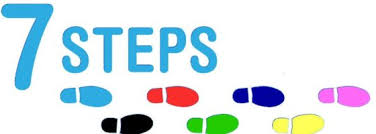Do you have English Language Learners in your classes? Yes, everyone does…Are you remembering to include your Seidlitz Seven Steps for a Language Rich Classroom in your lesson plans each day? Your goal should be to support your EL learners by requiring them to speak every day, each period, in English.
STEP 1: What to say, when the response is “I don’t know.”
-May I please have some more information?
-May please have some time to think?
-Would please repeat the question?
-Where could I find more information about that?
-May I ask a friend for help?
* We have cards for your students’ desks as reminders, just ask.
What does the research say?
Teaching students what to say when they do not know what to say is a metacognitive strategy. Research shows that the use of metacognitive strategies in the classroom has an impact on student performance.
How does this step work?
First, the teacher must explicitly teach the strategy to students, model the strategy and explain when and why the strategy should be used.
What if a student does not respond?
Smile politely and ask students to, “Please use one of the responses.” Then wait. If they refuse, model the strategy and ask again.
STEP 2: Require your students to speak in complete sentences.
When answering questions or even when discussion good things. Every opportunity helps. Need a list of sentence stems, just ask.
What does the research say?
Research indicates that in order for students to use content language in their speaking and writing, they must hear the language multiple time and in multiple contexts. Having students speak in complete sentences provides a means for students to hear content-area vocabulary used in context, not only by the teacher, but also by their peers.
How does this work?
Support students as they learn to respond in complete sentences by providing them with sentence stems. A sentence stem is a short phrase that gives students the beginning of a sentence and helps them structure a response.
STEP 3:Randomize When Calling on Scholars
Randomize when calling on your students and ensure you call on every student during a lesson. Otherwise how do you know they learned?
We all love solutions that require very little planning. Create simple systems like using index cards or Popsicle sticks with students’ names on them. It changes the way we ask questions and remember, the teacher “always” knows which name is on it. If you draw Danny’s name, the only person who really knows the name is you.
This solution helps us avoid phrases like:
- Who can tell me
- Let’s see who knows
- Does anyone know
- Can someone tell the class?
The goal is to have ALL students involved in the discussion, so ALL students’ learning can be assessed. When randomizing the questioning technique looks like this:
- Ask the question
- Pause
- Select a student to respond using a random selection process
Pausing after the question which gives everyone a chance to think, and it creates some “positive tension” as students wonder who will be chose. It will also reduce the Horshack’s in he classroom.
Index cards & Popsicle sticks work great, but you can also use apps like Stick Pick which allows you to create a class and track the levels of questions asked and the students’ success.
As we conduct our walk throughs and review lesson plans we will begin to look for these simple steps.
